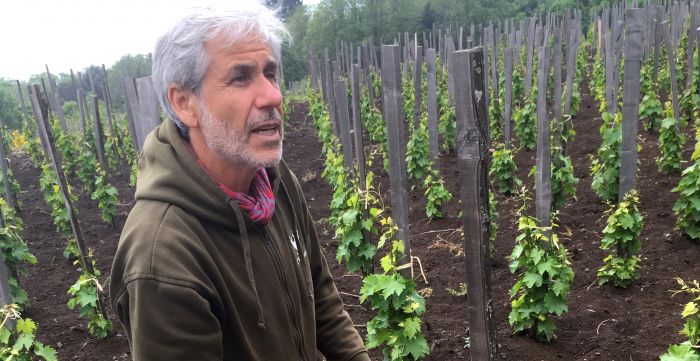
producer profile
05.06.2019
Salvo Foti Producer Profile
<p>When you speak about the wines of eastern <glossary title="951">Sicily</glossary> and especially the wines from the soils of <span class="zalup"><span><glossary title="429">Mount Etna</glossary><span>,</span></span></span> <glossary title="951">Sicily’s</glossary> famous, majestic volcano, it is impossible to not mention the name Salvo Foti. A native of the city of <span class="zalup"><span><glossary title="248">Catania</glossary><span>,</span></span></span> Salvo studied <glossary title="422">enology</glossary> and began his career in 1981 as a technical and agrarian advisor to noted <glossary title="427">estates</glossary> that today are universally recognized amongst the best in <span class="zalup"><span><glossary title="951">Sicily</glossary><span>.</span></span></span> But it is still working with and for someone else; Salvo wanted his own project to really make a wine that sings.</p>
<p>A number of years ago, Salvo’s love of the grapes and soils of <glossary title="429">Etna</glossary> led him to initiate a project called I Vigneri. It takes its name from an association that existed in the <glossary title="429">Etna</glossary> region in 1435, <em>Maestranzi dei Vigneri</em>, an association of vineyard workers that greatly influenced the wine culture of the <glossary title="">Etna</glossary> region. Today, I Vigneri is an association between Salvo Foti, local vine experts and grape growers who bring their long experience among the particular vines of <glossary title="">Etna</glossary> to their work in the vineyard and <span class="zalup"><span><glossary title="254">cellar</glossary><span>.</span></span></span> <br />
<br />
The vines for the <glossary title="427">estate</glossary>'s top red wine, "Vinupetra", are concentrated at 700 meters altitude on the north side of the volcano near the town of <span class="zalup"><span><glossary title="225">Calderara</glossary><span>.</span></span></span> Here, the climate is more like the north of Italy than <span class="zalup"><span><glossary title="951">Sicily</glossary><span>,</span></span></span> winters are harsh and cold, the summers are hot and dry and there can be extreme fluctuations between night and day temperatures. The soils are broken or decomposed <glossary title="1117">lava stone</glossary> of varying depth mixed with <span class="zalup"><span><glossary title="909">sand</glossary><span>.</span></span></span> Many of the vines are rehabilitated <span class="zalup"><span><glossary title="740">old vines</glossary><span>,</span></span></span> some over 100 years-old, planted at 10,000 plants per <glossary title="523">hectare</glossary> in <strong><glossary title="497">alberello</glossary></strong>, the only <glossary title="1039">training system</glossary> Salvo considers for producing great fruit under the climatic conditions of <span class="zalup"><span><glossary title="429">Etna</glossary><span>.</span></span></span> All of these factors allow for work only by hand or mule in the vineyards. <br />
<br />
Because these vines are so old, there is great diversity within the vineyard and different <glossary title="1169">strains</glossary> of each of the varieties appear. The grapes are the autochthonous <glossary title="713">Nerello Mascalese</glossary> and <glossary title="713">Nerello Cappuccio</glossary> with <glossary title="90">Alicante</glossary> (<glossary title="508">Grenache</glossary>) and a smattering of vines referred to as <span class="zalup"><span><glossary term="Francisi" title="1384"><em>Francisi</em></glossary><span>,</span></span></span> because their variety and provenance are unknown. There is a system of replanting using only <glossary title="941">massale selection</glossary> with cuttings from the older vines while maintaining the diversity of plants. Replanting is done in the older vineyards because some of the <glossary title="740">old vines</glossary> die, but there are also new, adjacent <glossary title="760">parcels</glossary> being planted. <br />
<br />
Two other sites in <glossary title="199">Bronte</glossary> are at extreme altitude. The first was planted in 2005 with white <glossary title="1071">varietals</glossary> at about 1200 meters elevation and produce the "Aurora" and "VignadiMilo" <span class="zalup"><span><glossary term="Cuvée" title="363">cuvées</glossary><span>.</span></span></span> The other is a vineyard of mainly hundred year old <glossary title="90">Alicante</glossary> (<glossary title="508">Grenache</glossary>) vines with some other red and white grape vines at 1300 meters surrounded by a holly oak forest, and from which a <glossary title="871">rosé</glossary> wine called "Vinudilice" is made. <br />
<br />
There is nothing used in the vineyards except <glossary title="333">copper</glossary>/<glossary title="993">sulfur</glossary> mix. No <span class="zalup"><span><glossary title="442">fertilizers</glossary><span>,</span></span></span> <glossary title="526">herbicides</glossary> or <glossary title="1142">pesticides</glossary> are used. The grapes are <glossary title="520">harvested by hand</glossary> at the end of September until mid-october. <glossary title="441">Fermentations</glossary> are done in <span class="zalup"><span><glossary term="Open Vat" title="1218">open oak vats</glossary><span>,</span></span></span> without <glossary title="423">enzymes</glossary> or <glossary title="1018">thermal control</glossary> (the nights by this time of year are quite cold). There is very little <glossary title="993">sulfur</glossary> used on the grapes or <span class="zalup"><span><glossary title="700">must</glossary><span>,</span></span></span> if at all. <glossary title="843">Racking</glossary> and <glossary title="185">bottling</glossary> are done under lunar cycle. The wines are <glossary title="185">bottled</glossary> with little or no <span class="zalup"><span><glossary title="447">filtration</glossary><span>.</span></span></span> <br />
<br />
Since its incarnation, each member of the I Vigneri association who works in the vineyards here and at other nearby <glossary title="427">estates</glossary> where Salvo is involved receive a quota of the grapes they pick at the other <glossary title="427">estates</glossary> to make a wine in common for their own consumption. Starting in 2005 and 2006, with the workers permission, Salvo <glossary title="185">bottled</glossary> some to sell. This wine, the "Rosso", is made from only the <glossary title="713">Nerellos</glossary> – Mascalese and Cappuccio – and is <glossary title="1104">vinified</glossary> in <glossary title="325">concrete</glossary> <span class="zalup"><span><glossary title="1140">vats</glossary><span>.</span></span></span> It is <span class="zalup"><span><glossary title="447">unfiltered</glossary><span>.</span></span></span> <br />
<br />
This is a breathtaking <glossary title="427">estate</glossary> with a mission to make great wines. Furthermore, it is an association that is pulling from the experience and energy of local grape growing talent and giving them a vested interest to create great wines in an region that is economically challenging for many of its inhabitants, especially farmers. <br />
<br />
Salvo says that a living wine has its own composition that arises from its own variables: the grape, the vine, the vineyard, the climatic conditions and the individual (vineyard worker and <glossary title="1104">vinifier</glossary>). It’s important that there is harmony and respect for each variable to make a wine that truly sings.<br />
<br />
You can see more at <a href="http://www.salvofoti.it/">www.salvofoti.it.</a> There is a great video of <glossary title="500">grafting</glossary> onto a planted <glossary title="869">rootstock</glossary> in the gallery. You can see the ash that makes up the soil in this region on the grafter’s hands.</p>
Article
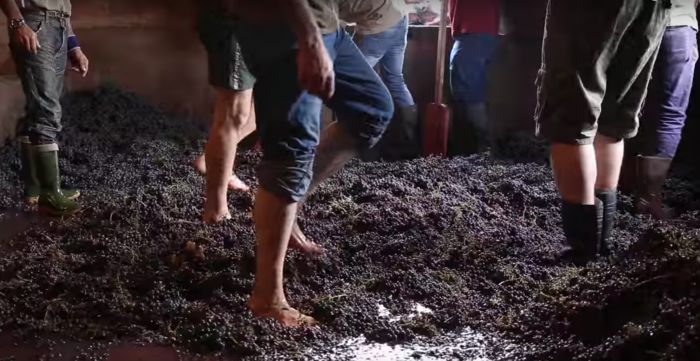
interview
05.06.2019
A Video Interview with Salvo Foti and Traditional Palmento Vinification at I Vigneri
<p><iframe allowfullscreen="" frameborder="0" height="360" src="//www.youtube.com/embed/qJjcCqVL5s8" width="640"></iframe></p>
<p><iframe allowfullscreen="" frameborder="0" height="360" src="//www.youtube.com/embed/g85yFT5P-jc" width="640"></iframe></p>
Article

producer visit
02.08.2019
This visit with Salvo Foti took place in May, 2014
<p><em><strong>This visit with Salvo Foti took place in May, 2014</strong></em></p>
<p><em><strong>Photos by Josefa Concannon, Jake Halper and Jill Bernheimer.</strong></em></p>
<p>That's the picture Salvo sent us the night before our visit. Oh <span class="zalup"><span> <glossary title="429">Etna</glossary><span>,</span></span></span> always erupting!<br />
<br />
After a lovely morning visit at <a href="http://louisdressner.com/producers/Castello/" target="_blank">Romeo del Castello</a>, it was once again time to visit the grand, mysterious Salvo Foti! <br />
<br />
While waiting for him, many of us got into a heated debate on who was going to buy this sweet miniature automobile. </p>
<p><img src="http://louisdressner.com/uploads/images/article/2019_Aug_02//01/20/012003397e5d22a4c293acc835f85d3a.jpg" /><br />
<img src="http://louisdressner.com/uploads/images/article/2019_Aug_02//eb/78/eb786006cfbed969f846f142c835c011.jpg" /><br />
<br />
No one could agree, so we decided to grab a coffee at the best named cafe of all time:</p>
<p><img src="http://louisdressner.com/uploads/images/article/2019_Aug_02//77/2c/772cf54db88884a1c7576b65899fb93b.jpg" /><br />
<br />
YES, I know it's spelled with a K but I still thought it was funny. </p>
<p><img src="http://louisdressner.com/uploads/images/article/2019_Aug_02//2e/2b/2e2b36e220162c32f5f5beffeba9ea49.jpg" /><br />
<br />
Not making us wait too long, Salvo pulled up with his right-hand man Mauricio and we drove up to a new vineyard. </p>
<p><img src="http://louisdressner.com/uploads/images/article/2019_Aug_02//47/e2/47e200deb7f8570efec2c005d62d2923.jpg" /><br />
<br />
This <glossary title="760">parcel</glossary> is at 1100 meters <glossary title="419">elevation</glossary> and was planted three years ago. Salvo does not plant <glossary title="713">Nerello Mascalese</glossary> above 800m, as it doesn't grow well in those circumstances. Whites, on the other hand, fare well, and this vineyard has been planted in <glossary title="482">Grecanico</glossary> and <span class="zalup"><span><glossary title="661">Minella</glossary><span>.</span></span></span> <br />
<br />
A small crew of the <em>I Vigneri</em> team was busy <glossary title="1028">tilling</glossary> the soils. </p>
<p><img src="http://louisdressner.com/uploads/images/article/2019_Aug_02//c2/1a/c21a1d013747527c9cebe99927bdd535.jpg" /><br />
<br />
<em>"Every time they do this, it's like adding a </em><glossary title="442"><em>fertilizer</em></glossary><em> to the vineyard. It's the vines' water."</em><br />
<br />
It's very important to do this work in the vines' infancy due to <glossary title="429">Etna's</glossary> <glossary title="1117">volcanic</glossary> ash soils. If the ash isn't constantly being shifted around, the roots will stay superficial and not reach the <span class="zalup"><span><glossary title="991">subsoils</glossary><span>.</span></span></span> Furthermore, wild grasses and flowers grow very quickly on <glossary title="1117">volcanic</glossary> ash, making for too much competition. <br />
<br />
<em>"If we weren't constantly </em><glossary title="1028"><em>tilling</em></glossary><em>, these vines would look like this." </em></p>
<p><img src="http://louisdressner.com/uploads/images/article/2019_Aug_02//72/a3/72a30a30e45412d49d7c0ca44b392703.jpg" /><br />
<br />
From there, we took a terrifying, extremely steep road that almost resulted in a few accidents. Certainly not for stick-shift novices... Fortunately no one was harmed and we were able to visit the <em>Vigna Bosco</em>:</p>
<p><img src="http://louisdressner.com/uploads/images/article/2019_Aug_02//d9/1d/d91dac795a8fdfb8f92ff9c9795b2092.jpg" /></p>
<p><img src="http://louisdressner.com/uploads/images/article/2019_Aug_02//ff/00/ff000ce72ad63db0eeeb1152aefcc153.jpg" /></p>
<p><img src="http://louisdressner.com/uploads/images/article/2019_Aug_02//66/52/66520e7aee241230b2825f6bca0e5810.jpg" /></p>
<p><img src="http://louisdressner.com/uploads/images/article/2019_Aug_02//88/71/8871b93dcca684a5e92df10ea58016b2.jpg" /></p>
<p>Salvo acquired this vineyard 12 years ago. To his knowledge, this is one of if not THE highest vineyard in all of <span class="zalup"><span><glossary title="429">Etna</glossary><span>,</span></span></span> towering at 1300 meters <span class="zalup"><span> <glossary title="419">elevation</glossary><span>.</span></span></span> Very few people still own vineyards at these types of altitude. <br />
<br />
<em>"In their eyes, it's too much work for too little result. Plus you need to have workers who know what they are doing, and those are getting harder and harder to come by." </em><br />
<br />
Due to the altitude, the vineyard produces very low alcohol grapes. <glossary title="521">Harvests</glossary> here are always extremely late as well. 2013 was picked on November 5th!<br />
<br />
<span class="zalup"><span><glossary title="508">Grenache</glossary><span>,</span></span></span> <span class="zalup"><span><glossary title="90">Alicante</glossary><span>,</span></span></span> <glossary title="482">Grecanico</glossary> and a bunch of grapes Salvo can't recognize are planted here. The vines are 110 years old, and all planted in <span class="zalup"><span><glossary title="464">franc de pied</glossary><span>.</span></span></span><br />
<br />
Speaking of <span class="zalup"><span><glossary title="464">franc de pied</glossary><span>,</span></span></span> a new plantation is in the works, all in <span class="zalup"><span><glossary title="941">massale</glossary><span>.</span></span></span> </p>
<p><img src="http://louisdressner.com/uploads/images/article/2019_Aug_02//cb/64/cb647168fd0e8703e6f09422d2457495.jpg" /><br />
<br />
Of course, everything will be raised in<strong> <glossary title="497">alberello</glossary></strong>.<br />
<br />
<em>"</em><glossary title="497"><em>Alberello</em></glossary><em> is the best and oldest </em><glossary title="1039"><em>training method</em></glossary><em> in the world. If this was used world-wide, fungal illness would disappear. Other </em><glossary title="1039"><em>training systems</em></glossary><em> are for </em><glossary title="279"><em>chemicals</em></glossary><em> and machines."</em><br />
<br />
That's quite a hefty statement I'm sure many would disagree with. Perhaps Salvo was specifically referring to hotter regions? Or <glossary title="429">Etna</glossary> specifically? Then again, <a href="http://louisdressner.com/mpdf/Mark_Angeli/visits/" target="notSet">Mark Angéli</a> <glossary title="1039">trains</glossary> all his <glossary title="281">Chenin</glossary> in <span class="zalup"><span><glossary title="497">gobelet</glossary><span>.</span></span></span> Ultimately, his argument lies in the fact that<strong> <glossary title="497">alberello</glossary></strong> gets no shadows from other vines and is exposed to more air. <br />
<br />
<em>"The cure for any plant's illness is sunshine." </em><br />
<br />
Salvo then busted out a picnic basket with a couple of bottles in it.</p>
<p><img src="http://louisdressner.com/uploads/images/article/2019_Aug_02//74/bf/74bf700b89527ae4546c6748883751c0.jpg" /></p>
<p>It was none other than 2011 "Vinudilice" sparkling!</p>
<p><img src="http://louisdressner.com/uploads/images/article/2019_Aug_02//30/a5/30a578af5ec7a9645d10ff1e124d0612.jpg" /><br />
<br />
"Vinudilice" is the wine produced from the <em>Vigna Bosco</em>, and usually consists of a still <glossary title="871">rosé</glossary> <span class="zalup"><span><glossary title="446">field blend</glossary><span>.</span></span></span> With the 2011 <span class="zalup"><span><glossary title="1109">vintage</glossary><span>,</span></span></span> Salvo exceptionally decided to make bubbles due to low quantities and maturity issues.<br />
<br />
The wine is already sold out. <br />
<br />
From <em>Vigna Bosco</em>, we headed to <em>Vinupetra</em>, undoubtedly in the top five vineyards I've seen in my lifetime. </p>
<p><img src="http://louisdressner.com/uploads/images/article/2019_Aug_02//2d/f4/2df47cc01e14d34c35431990c493535c.jpg" /></p>
<p><img src="http://louisdressner.com/uploads/images/article/2019_Aug_02//55/3c/553cccd55edb3efc2938e8c1dc9f001c.jpg" /></p>
<p><img src="http://louisdressner.com/uploads/images/article/2019_Aug_02//63/8e/638e4608a6e4055d453f26415db0ee07.jpg" /></p>
<p><img src="http://louisdressner.com/uploads/images/article/2019_Aug_02//11/54/1154286c7705610700774769ca9cb56f.jpg" /></p>
<p><img src="http://louisdressner.com/uploads/images/article/2019_Aug_02//a7/f3/a7f3cbfe8aa579c955b62ad22f1963a8.jpg" /></p>
<p>Most of the vines are over 100 years old. But at 240 years old (!!!), Salvo thinks a small patch are probably the oldest existing vines in <span class="zalup"><span><glossary title="429">Etna</glossary><span>.</span></span></span> <br />
<br />
<em>"You have to treat these vines with the same respect and care and you would a 90 year old person. When you're 90 you can't do the same stuff you were doing when you were 20. It's the same with vines."</em><br />
<br />
On average, the work to maintain these <glossary title="740">old vines</glossary> requires his team 250 days of work. <glossary title="1130">Young vines</glossary> trained in <glossary title="335">Cordon</glossary> on these soils require approximately 50 days of work a year.<br />
<br />
<em>"40 years ago, all of <strong><glossary title="429"><em>Etna</em></glossary>'s </strong>vines were trained in<strong> </strong> <span class="zalup"><span><glossary title="497"><em>alberello</em></glossary><span>.</span></span></span> Now it's water, </em><glossary title="279"><em>chemicals</em></glossary><em> and vines planted to last only 20 years before being ripped up." </em><br />
<br />
The craziest of these vines were HUGE. Here's one taller than me!</p>
<p><img src="http://louisdressner.com/uploads/images/article/2019_Aug_02//a2/15/a215765af326f7c44181f84efeb59129.jpg" /><br />
<br />
And I'm tall!</p>
<p><img src="http://louisdressner.com/uploads/images/article/2019_Aug_02//76/bc/76bc4e400903949b50610b2bef1ed9d4.jpg" /></p>
<p><img src="http://louisdressner.com/uploads/images/article/2019_Aug_02//57/24/572406b936da7ee5d6420a4efc16f2b5.jpg" /></p>
<p>Conveniently enough, Salvo's house overlooks <em>Vinupetra</em>, and it was at a long table that we sat down to eat dinner and taste wine. </p>
<p><img src="http://louisdressner.com/uploads/images/article/2019_Aug_02//e2/bc/e2bc40543efd3985031006e4376d6211.jpg" /><br />
<br />
As always, the antipasti alone was enough to fill an average human being up. </p>
<p><img src="http://louisdressner.com/uploads/images/article/2019_Aug_02//3f/c9/3fc9735ec2e149c5317b518175fef400.jpg" /><br />
<br />
Of course, Salvo has an oven set up outside, perfect for making flatbreads and pizza. </p>
<p><img src="http://louisdressner.com/uploads/images/article/2019_Aug_02//6f/5f/6f5f8b6d35c65abc053c8f2d3f040c34.jpg" /></p>
<p><img src="http://louisdressner.com/uploads/images/article/2019_Aug_02//51/e2/51e201311db18624de1268e49079505b.jpg" /></p>
<p>As we sat down, we asked for a spit bucket. Reluctantly, Salvo got up and brought some to the table. The one on my side had a large spider web in it.<br />
<br />
<em>"As you can see, no one uses that thing!"</em><br />
<br />
We started with some white, then the 2013 "Vinudilice"<strong> <glossary title="871">rosato</glossary></strong>, which if you recall is from the <em>Vigna Bosco</em> we visited earlier. Before Salvo acquired it, the prior owner used this <glossary title="">parcel</glossary> to make house wine for his family.<br />
<br />
<em>"When I took over, he told me that his grandfather had always made the wine with one night of </em><glossary title="610"><em>skin maceration</em></glossary><em>. So I continue this tradition."</em><br />
<br />
We then moved on to the 2012 <glossary title="429">Etna</glossary> <span class="zalup"><span><glossary title="874">Rosso</glossary><span>.</span></span></span> Did you know that the <glossary title="429">Etna</glossary> <glossary title="1156">DOC</glossary> is the oldest in <span class="zalup"><span> <glossary title="951">Sicily</glossary><span>,</span></span></span> dating back to 1968? Did you also know that this wine is illegally made in a <span class="zalup"><span><glossary title="758">Palmento</glossary><span>?</span></span></span> <br />
<br />
<em>"Sicilians always expect something illegal. So we don't worry."</em><br />
<br />
The <glossary title="429">Etna</glossary> <glossary title="874">Rosso</glossary> is always <span class="zalup"><span><glossary title="458">foot-trodden</glossary><span>,</span></span></span> then an<strong> <glossary title="1218">open vat</glossary></strong> <glossary title="441">fermentation</glossary> takes place for 7 to 10 days before the wine is <glossary title="843">racked</glossary> to chestnut <span class="zalup"><span><glossary title="142">barrels</glossary><span>.</span></span></span> <br />
<br />
The tasting ended with younger <glossary title="1109">vintages</glossary> of "Vinupetra", followed by 2006, 2002 and 2001.<br />
<br />
As we ended dinner, Salvo toasted us and had this to say:<br />
<br />
<em>"I thank you all for coming and doing what you do. Wine is important, wine is three dimensional: there is time (the cycle of the year, the wine </em><glossary title="74"><em>aging</em></glossary><em>...), space (the context of where it is consumed, whether in its place of origin or all the way in the US...) and the mental (how it makes us feel, how it brings us together...)."</em><br />
<br />
<br />
I guarantee you a lot was lost in translation, but it was a special way to end a special night. </p>
<p><img src="http://louisdressner.com/uploads/images/article/2019_Aug_02//bb/57/bb57d792c72088780c4e8ad531c29950.jpg" /></p>
Article
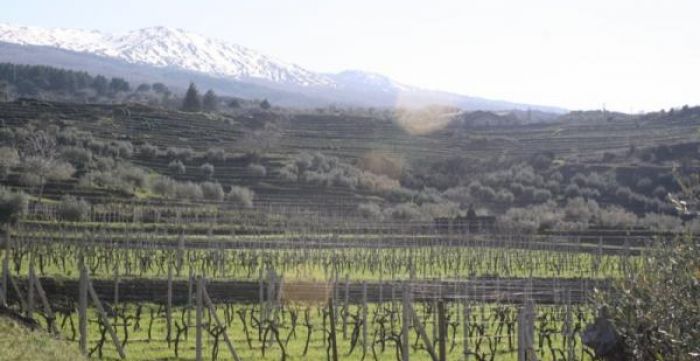
producer visit
02.08.2019
This visit to I Vigneri took place in April, 2012
<p><strong><em>This visit at I Vigneri took place in April, 2012.</em></strong></p>
<p><strong><em>Words by Jules Dressner, photos by Lauren Feldman, Shawn Mead and Ian Becker.</em></strong></p>
<p>We'd gotten some bad news during lunch at <a href="http://louisdressner.com/producers/mayr/" target="_blank">Nusserhof</a>. Our early afternoon flight from <glossary title="1084">Verona</glossary> to <glossary title="248">Catania</glossary> had been cancelled, and the only alternative was an 8:30 A.M flight. From <span class="zalup"><span><glossary title="1076">Venice</glossary><span>.</span></span></span> No one wanted to lose an entire day in <glossary title="951">Sicily</glossary> so the group was ok with it, but it meant waking up at 5:30 am for an hour and a half drive to the airport. <br />
<br />
As an aside, you know a plane is old when there's still ashtrays on each arm rest.<br />
<br />
After a quick, restless flight, we were officially in <span class="zalup"><span><glossary title="951">Sicily</glossary><span>!</span></span></span> With tiny eyes, everyone grabbed their rental cars and we drove to <span class="zalup"><span><glossary title="844">Randazzo</glossary><span>.</span></span></span> After checking into our hotel, we were greeted by Alfio from I Vigneri. We arrived just around lunch, which took place at the incredibly named <a href="http://www.tripadvisor.com/Restaurant_Review-g1028923-d1081868-Reviews-San_Giorgio_e_il_Drago-Randazzo_Province_of_Ragusa_Sicily.html">San Giorgio e il Drago</a>. During the meal, Alfio opened up some "Vinudilice" <span class="zalup"><span><glossary title="871">rosé</glossary><span>.</span></span></span> It comes from a <glossary title="760">parcel</glossary> called <em>Vigna Bosco</em>. <br />
<br />
It's a red and white <glossary title="446">field blend</glossary> composed mostly of <span class="zalup"><span><glossary title="90">Alicante</glossary><span>,</span></span></span> with a tiny bit of mystery white and a bunch of random reds (i.e: they're not sure what the grapes are), all <glossary title="309">co-planted</glossary> together. The soil is ash, the <glossary title="419">elevation</glossary> is 1300 meters and the vines are a 100+ years old. We also had the <em><glossary title="429">Etna</glossary> <glossary title="874">Rosso</glossary></em>, also from 100 year old vines. Both are <glossary title="1104">vinified</glossary> with <glossary title="538">native yeasts</glossary> and minimal <span class="zalup"><span><glossary title="993">sulfur</glossary><span>,</span></span></span> added only at <span class="zalup"><span><glossary title="185">bottling</glossary><span>.</span></span></span> Both are very good and paired excellently with the local pastas and rabbit served at lunch. <br />
<br />
At some point during the meal, Alfio informed us that Salvo wouldn't be able to join us because of an unexpected medical operation, and that he and Maurizio Pagano (I Vigneri's head honcho) would host us instead. It was nothing serious, but Salvo did have to stay in the hospital for a few days so we didn't get to see him...<br />
<br />
After eating, we set off to see the first of many vineyard sights. </p>
<p><img src="http://louisdressner.com/uploads/images/article/2019_Aug_02//3b/05/3b0515e00e140e37413815792845a0dd.jpg" /><br />
<br />
A quick walk up the path leads to more <glossary title="1022">terraced</glossary> vines and <glossary title="429">Mount Etna</glossary> looming in the background.</p>
<p><img src="http://louisdressner.com/uploads/images/article/2019_Aug_02//97/ff/97ff07550b3a244ce30a4e20d9c875b4.jpg" /></p>
<p><img src="http://louisdressner.com/uploads/images/article/2019_Aug_02//77/a1/77a104f19095e9a4b96edb2f8ff9f352.jpg" /><br />
<br />
<br />
Once we'd made it up top, we were greeted by the incredible Maurizio Pagano.</p>
<p><img src="http://louisdressner.com/uploads/images/article/2019_Aug_02//9c/68/9c687dce659b9b6e0b9d29bf54ed00ed.jpg" /><br />
<br />
This guy is a serious character: his conviction and passion for <span class="zalup"><span><glossary title="1103">viticulture</glossary><span>,</span></span></span> at least in his way of vocalizing it, is unparalleled. On a prior visit, he apparently told <a href="http://louisdressner.com/producers/Occhipinti/" target="notSet">Arianna Occhipinti</a> (who had tagged along with Jeff Vierra and was translating), something like: <br />
<br />
<em>"We give him (Salvo) the gold, he makes the wine." </em></p>
<p><img src="http://louisdressner.com/uploads/images/article/2019_Aug_02//de/ef/deef2c52bc038715721d69c0a215fb3c.jpg" /><br />
<br />
At this point, if you're not familiar with the association Salvo Foti founded 12 years ago, you may be asking yourself, what exactly is I Vigneri? <br />
<br />
The renaissance of <glossary title="429">Etna</glossary> wines over the last decade can be largely, if not entirely attributed to Salvo Foti and the team he put together in 2000. Salvo was born in <span class="zalup"><span><glossary title="429">Etna</glossary><span>,</span></span></span> and has always had a love affair with the wines of his region. He is also a famous <glossary title="422">oenologist </glossary>and makes the wine for a lot of people in the area. I Vigneri is the culmination of Salvo's desire to promote an environmentally sound <glossary title="78">agriculture</glossary> with a simultaneous return to traditional farming. Taken from the association's <a href="http://www.ivigneri.it/index.php">official website</a>: <br />
<br />
<em>"The "Maestranza dei Vigneri" ("Winegrowers Guild") was established in </em><glossary title="248"><em>Catania</em></glossary><em> in 1435. This important association of vine cultivators working in the </em><glossary title="429"><em>Etna</em></glossary><em> region was the foundation stone for professionalism in wine growing and production.<br />
After 500 years, I Vigneri is today the name of a company of winegrowers and producers operating around </em><glossary title="429"><em>Etna</em></glossary><em> and in eastern </em><glossary title="951"><em>Sicily</em></glossary><em>. The proprietors are vine experts like Salvo Foti (www.salvofoti.it) and a group of local growers from the </em><glossary title="429"><em>Etna</em></glossary><em> region.<br />
<br />
I Vigneri is the culmination of more than 30 years experience in Eastern </em><glossary title="951"><em>Sicily</em></glossary><em>, of historic, social and technical research aimed at achieving "excellence" in wine growing and producing. We have sought to use non-invasive methods and systems, to respect local traditions and our own ancient grape varieties as far as possible, and to avoid the damage that over-reaching ambition and egoism can cause. Our work ethic lies in the pleasure of work well done, without frenzy, in harmony above all with ourselves, and with all that surrounds us: environment, nature, the volcano </em><glossary title="429"><em>Etna</em></glossary><em>, which is so much a part of us. I Vigneri is also a holistic system of grape growing and wine production which respects our environment."</em><br />
<br />
The deal is this: if you want Salvo Foti to make your wine, the I Vigneri team have to be the ones taking care of the vines. This means immediately shifting to <glossary title="746">organic</glossary> <glossary title="1103">viticulture</glossary> practices, eliminating any mechanical labor, <glossary title="520">hand harvesting</glossary> and a focus on lower <span class="zalup"><span><glossary title="1129">yields</glossary><span>.</span></span></span> The vines must also be <glossary title="1039">trained</glossary> in<strong> <glossary title="497">alberello</glossary></strong>, which Salvo believes is the only way to express <glossary title="429">Etna's</glossary> <span class="zalup"><span><glossary title="1026">terroir</glossary><span>.</span></span></span> Maurizio leads the pack, and all in all, 35 <glossary title="1089">vignaoli</glossary> are responsable for day to day maintenance of A LOT of vines. These guys have been in the vineyards their whole lives, so they know what they're doing. What's great is that this also offers them job security they might not otherwise have, all while encouraging locals to take pride in traditional <span class="zalup"><span><glossary title="78">agriculture</glossary><span>.</span></span></span> <br />
<br />
Everyone involved is extremely proud, and they show it by always being adorned in I Vigneri gear (see Maurizio's photo above, and the great pics from their 2011 <glossary title="521">harvest</glossary>). When you see the red gear with an<strong> <glossary title="497">alberello</glossary></strong> vine somewhere on it, you know who's taking care of business...<br />
<br />
At the first <glossary title="760">parcel</glossary> we visited, the guys had just planted some very <span class="zalup"><span><glossary title="1130">young vines</glossary><span>.</span></span></span></p>
<p><img src="http://louisdressner.com/uploads/images/article/2019_Aug_02//44/5d/445dd53fdab0de2f7ca47a021452fd35.jpg" /></p>
<p><img src="http://louisdressner.com/uploads/images/article/2019_Aug_02//d5/39/d53974f2e5d30d8bf98e7700bc4b222c.jpg" /></p>
<p>All vines, especially when they are very young and the roots haven't really sunk into the ground, have to stay on stakes because the ash soils are so loose that they could easily be ripped out during routine <glossary title="810">plowing</glossary> and soil work. <br />
<br />
On the same site, we visited the beautiful <glossary title="758">palmento</glossary> where the <glossary title="429">Etna</glossary> <glossary title="874">Rosso</glossary> is made. </p>
<p><img src="http://louisdressner.com/uploads/images/article/2019_Aug_02//0c/34/0c34ad73affb8bdb4f8fef9c322015e0.jpg" /><br />
<br />
<br />
The fruit is brought up a flight of stairs to the top of the edifice where the grapes are <span class="zalup"><span><glossary title="458">foot trodden</glossary><span>.</span></span></span> The juice then trickles down into <glossary title="325">concrete</glossary> <glossary title="1140">vats</glossary> below to begin <span class="zalup"><span><glossary title="441">fermentation</glossary><span>.</span></span></span> I once again direct you to the 2011 <glossary title="521">harvest</glossary> pics, which (un-chronologically) document this process. We also checked out the attached -and very abandoned- <glossary title="142">barrel</glossary> room. </p>
<p><img src="http://louisdressner.com/uploads/images/article/2019_Aug_02//66/0b/660bdfc17b938f71dfc334c7c616bb31.jpg" /><br />
<br />
There was actually still wine in that thing. And it stunk!<br />
<br />
After visiting another site, we took a quick rest before dinner at I Vigneri's club house. Ok, it's not really a club house, but it's a little space in downtown <glossary title="844">Randazzo</glossary> where you can buy the wines, the two books Salvo has written about wine as well as his novel. Yes: Salvo Foti wrote a novel. We had the "Vinujancu" as an <span class="zalup"><span><glossary title="112">aperitif</glossary><span>:</span></span></span> this white wine comes from a small <glossary title="760">parcel</glossary> at 1200 meters altitude; the grape is <span class="zalup"><span><glossary title="239">Carricante</glossary><span>,</span></span></span> and <glossary title="1139">indigenous</glossary> <span class="zalup"><span><glossary title="1071">varietal</glossary><span>.</span></span></span> The wine is un<span class="zalup"><span><span>-</span> <span class="zalup"><span><glossary title="993">sulfured</glossary><span>.</span></span></span></span></span><br />
<br />
Maurizio was there and he was almost a different person. Casually dressed in jeans and sneakers, his stern persona from earlier was gone; he was all smiles and told funny stories the whole night. He did however keep reiterating how great all the the wines were throughout the meal... <br />
<br />
Upstairs, a big table was set up for us and we got to taste a bunch of I Vigneri wines that Salvo makes but we don't import. To be clear, we only import Salvo's line of wines. I asked Kevin why, and he explained that many of them were <glossary title="542">inoculated</glossary> and/or more copious in <span class="zalup"><span><glossary title="993">sulfur</glossary><span>.</span></span></span> I was surprised to hear this, since I naively assumed that because Salvo was so insistent that the vines be worked <span class="zalup"><span><glossary title="746">organically</glossary><span>,</span></span></span> he'd also be diligent on <span class="zalup"><span><glossary title="976">spontaneous fermentation</glossary><span>.</span></span></span> Kevin replied:<br />
<br />
"<em>You have to pick your battles. Salvo has chosen to focus his energy on </em><glossary title="78"><em>agriculture</em></glossary><em> and the environment, and in doing so he's cleaned up a lot of </em><glossary title="429"><em>Etna's</em></glossary><em> vineyards. With his own line, we're on the same page philosophically. But he still makes the wine his clients want him to make for them. </em><glossary title="976"><em>Spontaneous fermentation</em></glossary><em> and low </em><glossary title="993"><em>sulfur</em></glossary><em> is a risk many are not willing to take.</em>" <br />
<br />
The next day, we woke up bright and early to check out even more vineyards, starting with the Vigna Bosco. </p>
<p><img src="http://louisdressner.com/uploads/images/article/2019_Aug_02//5b/74/5b74901143bba1a5e69ff94b7af669c2.jpg" /></p>
<p>We got to meet Ciccio the mule! </p>
<p><img src="http://louisdressner.com/uploads/images/article/2019_Aug_02//6d/f7/6df7d02c9b6078da6b2e1b44b73fdf5a.jpg" /><br />
<br />
I Vigneri does as much soil work with mules as they can. It's a lot of hard work for both man and beast, and Maurizio told us that the last one couldn't handle it: his heart exploded on the job! Maurizio punctuated this story by doing "the meh".</p>
<p><img src="http://louisdressner.com/uploads/images/article/2019_Aug_02//7e/0c/7e0cf4f484f72af74864e0e1f84ffe8b.jpg" /></p>
<p>It was pretty hilarious. I'm pretty sure that if he was a New Yorker, he would accompanied the gesture with: "<em>Whaddaya gonna do?</em>". Fortunately, Ciccio is a great worker and Maurizio likes him a lot. </p>
<p><img src="http://louisdressner.com/uploads/images/article/2019_Aug_02//68/14/6814e45735a9ccf48db6caa0db018760.jpg" /><br />
<br />
But he'll still ride him if he's not doing a good job. </p>
<p><img src="http://louisdressner.com/uploads/images/article/2019_Aug_02//83/f2/83f22424c7865d67c73f103c375b902c.jpg" /><br />
<br />
Alfio told Ciccio he WAS doing a good job, and not to worry about Maurizio always bossing him around. </p>
<p><img src="http://louisdressner.com/uploads/images/article/2019_Aug_02//aa/6b/aa6b3513f1c062b0f5756f855680ffef.jpg" /></p>
<p>We then visited another new site, where a mystery white was being grown ("<em>ask Salvo what it is!</em>") </p>
<p><img src="http://louisdressner.com/uploads/images/article/2019_Aug_02//88/34/8834e570d59487602fccc304bb153a24.jpg" /></p>
<p><img src="http://louisdressner.com/uploads/images/article/2019_Aug_02//ba/ef/baef9f2ba40bd094e839a0ba24f117d7.jpg" /></p>
<p>Before we knew it, it was lunch time so we went back to <em>San Giorgio e il Drago</em> because Alfio said we weren't going to find better. Nobody complained.</p>
Article
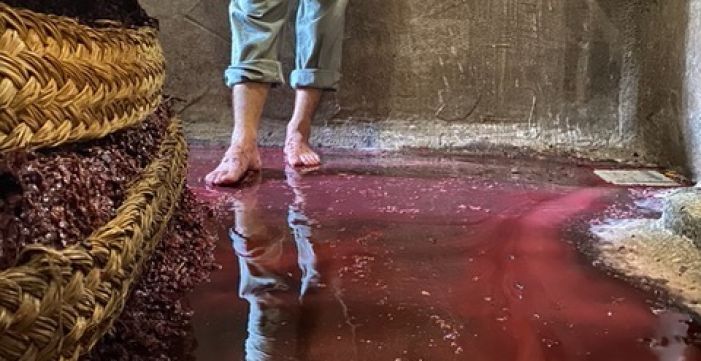
harvest report
03.12.2024
2024 Harvest Report from Salvo Foti
<p>2024 was marked by little rain in the autumn-winter period, with no snowfall and with above average maximal temperatures. Some unseasonal rains arrived between May and June, but it was limited and less intense than the previous year: this avoided massive attacks of downy mildew that had characterized the 2023 vintage.</p>
<p>The summer months and all of September were quite hot. The rains, which arrived at various moments during this period, also of good intensity and quantity, allowed the plants to recover from the stress due to the summer heat. Both sugar and phenolic ripening were very slow given the significant temperature ranges between day and night and the extreme climatic passages between hot and cold. Only between the end of September and the first ten days of October did our native Etna grapes reach perfect ripeness. The 2024 vintage gave healthy grapes. In our opinion it is an excellent vintage, both in quantity and quality.</p>
<p>The Carricante from Milo, in the Caselle district at 800 meters on the eastern side of Etna was harvested between the first and last ten days of October. The Nerello Mascalese, in the northern part of Etna at 600 meters was harvested between the end of September and the first ten days of October. The other vineyards at 1000m (Grenache and Grecanico) and 1300 meters (Grenache, Grecanico, Minnella Nera and Minnella Bianca) on the north-west side of Etna were harvested in mid-October.</p>
Article

harvest report
03.01.2023
2023 Harvest Report from Simone Foti
<p><strong>October 20th, 2023:</strong></p>
<p>The climatic trend of 2023 was characterized by abundant and continuous rainfall and subsequently by long and excessive heat waves, with an average increase in maximum temperatures of 2.5°C. Work in the vineyard was very demanding this year. The rains, which usually arrive abundantly in the first months of the year, only came between May and June, creating a humid climate for the beginning of the vegetative cycle right through <span class="zalup"><span><glossary term="Flowering" title="1179">flowering</glossary><span>.</span></span></span></p>
<p>Strong attacks of <glossary term="Mildew" title="1137">mildew</glossary> put us to the test, but we managed to contain them and avoid serious damage, intervening with <glossary term="Contact Treatment" title="328">treatments</glossary> every time it rained (15 <glossary term="Contact Treatment" title="328">treatments</glossary> compared to the usual three or four per season) to keep the plant's immune defenses high and counteract the fungus that has spread this season. We kept the <glossary term="Mildew" title="1137">mildew</glossary> at bay but we've never seen it be so aggressive. In July, on the other hand, we had at least three waves of strong heat to which our sapling vines have been able to resist: their roots sink deep, where it is easy to find the necessary humidity to counteract the strong summer evaporation. </p>
<p>The summer continued throughout the month of September and October, favoring not only the excellent ripening of the grapes, but also the <span class="zalup"><span><glossary term="Spontaneous Fermentation" title="976">spontaneous fermentations</glossary><span>,</span></span></span> which are easier in these conditions. Now that all the grapes are in the <glossary term="Cellar" title="254">cellar</glossary> and the first wines are finished, having fully <glossary term="Fermentation" title="441">fermented</glossary> and in their initial stage of <span class="zalup"><span><glossary term="Elevage" title="418">elevage</glossary><span>,</span></span></span> we can say that we are very happy with this <span class="zalup"><span><glossary term="Harvest" title="521">harvest</glossary><span>.</span></span></span> The wines present themselves with strong personality: tension and freshness, excellent <glossary term="Acidity" title="71">acid</glossary> to sugar balance and a great amount of <span class="zalup"><span><glossary term="Malic Acid" title="1247">malic acid</glossary><span>.</span></span></span> We believe that 2023 will be an excellent <span class="zalup"><span><glossary term="Vintage" title="1109">vintage</glossary><span>.</span></span></span></p>
Article
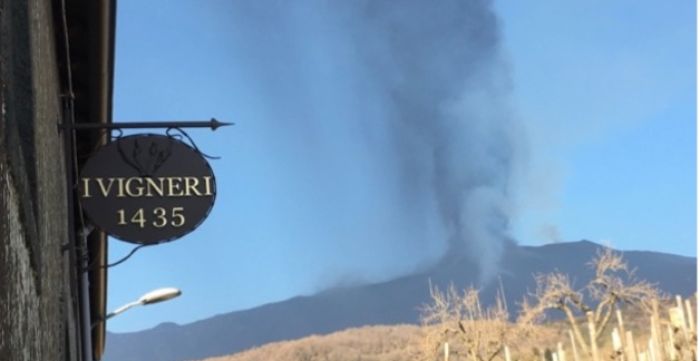
harvest report
17.12.2021
2021 Harvest Report from Salvo Foti
<p>It's been a long time since there had been seasonal trends like that of 2021. The abundant spring rains provided the soils with good humidity, but made the spread of powdery <glossary term="Mildew" title="1137">mildew</glossary> aggressive. Our traditional work of cultivation, which involves a meticulous <glossary term="Green Harvest" title="507">green pruning</glossary> and repeated cuttings of the leaves around the <span class="zalup"><span><glossary term="Cluster/Bunch" title="1138">bunch</glossary><span>,</span></span></span> allowed us to have healthy <glossary term="Cluster/Bunch" title="1138">bunches</glossary> in a natural way. The summer was particularly hot and dry, with recurring heatwaves and a long period of <span class="zalup"><span><glossary term="Drought" title="1167">drought</glossary><span>.</span></span></span> These summer conditions brought the vine to a natural stress for lack of water, fortunately our autochthonous <span class="zalup"><span><glossary term="Nerello Mascalese/Nerello Cappuccio" title="713">Nerello Mascalese</glossary><span>,</span></span></span> <glossary term="Nerello Mascalese/Nerello Cappuccio" title="713">Nerello Cappuccio</glossary> and <glossary term="Carricante" title="239">Carricante</glossary> produce greater synthesis of sugars and matter. </p>
<p>The fall, at times particularly rainy, helped the sap that had been momentarily blocked by the drought flow again, giving the vines vigor and allowing a slow and natural maturation. The rains continued to be abundant until October. This did not damage the bunches, which went through a slow and excellent ripening. Our precise and complete work of green pruning the leaves around bunches in June allowed for healthy grapes to grow without further treatments of sulfur or copper.</p>
<p>Our harvest started on October 1st in <glossary term="Milo" title="1460">Milo</glossary> picking a part of the <span class="zalup"><span><glossary term="Carricante" title="239">Carricante</glossary><span>.</span></span></span> We then picked the Vignacalderara vineyard for reds. Then back to <glossary term="Milo" title="1460">Milo</glossary> for the "VignadiMilo" and "Palmento Caselle", and again to Vignacalderara for the "Vinupetra" and "VitiCentenarie". After a few days of rest, we <glossary term="Harvest" title="521">harvested</glossary> the Tartaraci Soprano vineyard and finally Vignabosco (which produces "Vinuldilice") on October 22nd. Vignabosco was the only sector we picked earlier than usual, in this case a full week (note: this is technically the highest cultivated vineyard in all of <glossary term="Etna" title="429">Etna</glossary> and one of the highest in the world.)</p>
<p>In <glossary term="Milo" title="1460">Milo</glossary>'s <span class="zalup"><span><glossary term="Carricante" title="239">Carricante</glossary><span>,</span></span></span> we had fallout of <glossary term="lapilli" title="1461">lapilli</glossary> on several occasions. Sometimes it crept between the <span class="zalup"><span><glossary term="Cluster/Bunch" title="1138">bunches</glossary><span>.</span></span></span> On August 29th there was an important and prolonged eruption in the afternoon with major dumps of <glossary term="lapilli" title="1461">lapilli</glossary> and <glossary term="-Select term-" title="">volcanic ash</glossary> covering the <glossary term="Carricante" title="239">Carricante</glossary> vineyards. Fortunately we did not have any damage on the <span class="zalup"><span><glossary term="Cluster/Bunch" title="1138">bunches</glossary><span>.</span></span></span> This was possible because The natural umbrella-like bearing of the leaves of our vines cultivated in <glossary term="Gobelet" title="497">alberello</glossary> with <glossary term="Chestnut Wood" title="1206">chestnut</glossary> stakes, they defended the <span class="zalup"><span><glossary term="Cluster/Bunch" title="1138">bunch</glossary><span>:</span></span></span> after the incident many leaves were pierced by the <glossary term="lapilli" title="1461">lapilli</glossary> relapse. This fact is a further demonstration of the need and adequacy of cultivating the vineyards on <glossary term="Etna" title="429">Etna</glossary> in <span class="zalup"><span><glossary term="Gobelet" title="497">alberello</glossary><span>.</span></span></span> </p>
<p><img src="https://louisdressner.com/uploads/images/article//928/ed/01/ed01a0c357127774e6f440b0f2db186a.jpg" /><img src="https://louisdressner.com/uploads/images/article//928/40/ea/40eadc62830fad09e45977622f0c4496.jpg" /><img src="https://louisdressner.com/uploads/images/article//928/39/11/39119e51ed7b59510d881c174dc6296d.jpg" /><img src="https://louisdressner.com/uploads/images/article//928/28/6a/286a6d0d3b2f847760a8db35b88b6c3a.jpg" /><img src="https://louisdressner.com/uploads/images/article//928/2a/bd/2abd131419dbd8ecd7f0b4283292f919.jpg" /><img src="https://louisdressner.com/uploads/images/article//928/0a/0c/0a0c00b0523c600d809c5d339ba2799a.jpg" /><img src="https://louisdressner.com/uploads/images/article//928/86/4f/864f65e195a8c7dec288045cfd8d72bb.jpg" /><img src="https://louisdressner.com/uploads/images/article//928/ec/51/ec51443845f5d995ab54d90f26f192ba.jpg" /><img src="https://louisdressner.com/uploads/images/article//928/a1/cb/a1cbd5a54a5adcc3482d7786addfbade.jpg" /><img src="https://louisdressner.com/uploads/images/article//928/88/e0/88e0dc9aa4483fe4c899074ffe98d024.jpg" /><img src="https://louisdressner.com/uploads/images/article//928/28/04/28048462e70ec0c8311eddddbb57e872.jpg" /><img src="https://louisdressner.com/uploads/images/article//928/c8/77/c8772e17740aaa32c9c18e3d0b521873.jpg" /><img src="https://louisdressner.com/uploads/images/article//928/5d/19/5d19d1caea76c8f756354026a8ce67dd.jpg" /><img src="https://louisdressner.com/uploads/images/article//928/19/46/1946218856dc420081802c024562834c.jpg" /><img src="https://louisdressner.com/uploads/images/article//928/8c/17/8c17511993560f580b460dc75c8ea07c.jpg" /></p>
Article
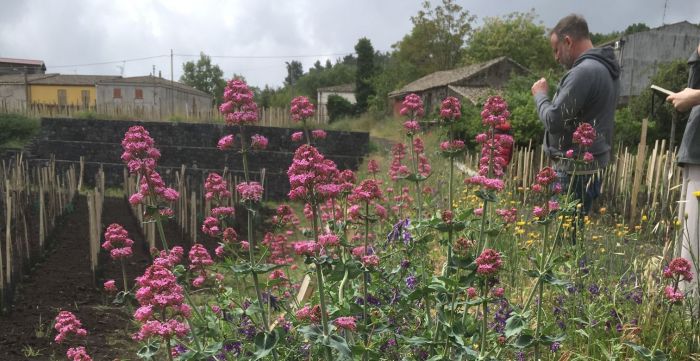
harvest report
05.01.2020
2020 Harvest videos from Salvo Foti
<p><iframe allowfullscreen="" frameborder="0" height="360" src="//www.youtube.com/embed/qZ6Cgv8i_KU" width="640"></iframe></p>
<p><iframe allowfullscreen="" frameborder="0" height="360" src="//www.youtube.com/embed/KNGa2jf20NQ" width="640"></iframe></p>
<p><iframe allowfullscreen="" frameborder="0" height="360" src="//www.youtube.com/embed/0H-XEeBVtZo" width="640"></iframe></p>
<p><iframe allowfullscreen="" frameborder="0" height="360" src="//www.youtube.com/embed/ytlNm82rAv0" width="640"></iframe></p>
<p><iframe allowfullscreen="" frameborder="0" height="360" src="//www.youtube.com/embed/_ZpNTnai7Po" width="640"></iframe></p>
<p><iframe allowfullscreen="" frameborder="0" height="360" src="//www.youtube.com/embed/qdwUlc1MsIg" width="640"></iframe></p>
Article
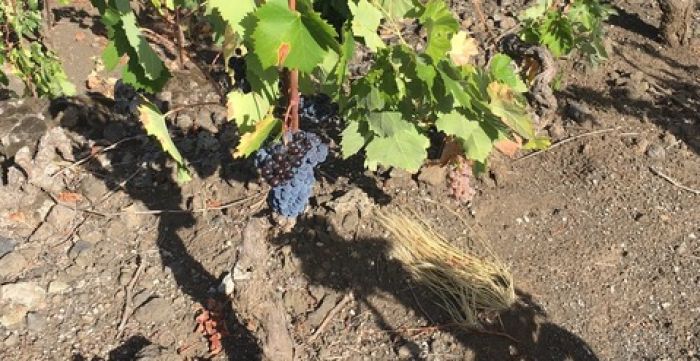
harvest report
27.10.2017
Pictures from Salvo Foti's 2017 Harvest
<p><img src="http://louisdressner.com/uploads/images/article/2019_Sep_18//92/d4/92d4551514a89f9b0f14063fccbe99e8.jpg" /></p>
<p><img src="http://louisdressner.com/uploads/images/article/2019_Sep_18//c2/21/c221b4c8f05407a3b0ed7f8775e302e3.jpg" /></p>
<p><img src="http://louisdressner.com/uploads/images/article/2019_Sep_18//f7/96/f7962beb61a45796aba6538e08f5c959.jpg" /></p>
<p><img src="http://louisdressner.com/uploads/images/article/2019_Sep_18//cd/cf/cdcf8bd355a5269ab3ec14c4ba6cd94c.jpg" /></p>
<p><img src="http://louisdressner.com/uploads/images/article/2019_Sep_18//2b/ef/2befcc9f1745f32da40ff9957b4852f3.jpg" /></p>
<p><img src="http://louisdressner.com/uploads/images/article/2019_Sep_18//93/aa/93aa21172b9f08548c118bd78602ad78.jpg" /></p>
<p><img src="http://louisdressner.com/uploads/images/article/2019_Sep_18//d6/59/d6593a8a983826563e4ab9f07eb9a14c.jpg" /></p>
<p><img src="http://louisdressner.com/uploads/images/article/2019_Sep_18//f6/b9/f6b94b929f8e179686bdb565f1fec7ef.jpg" /></p>
Article
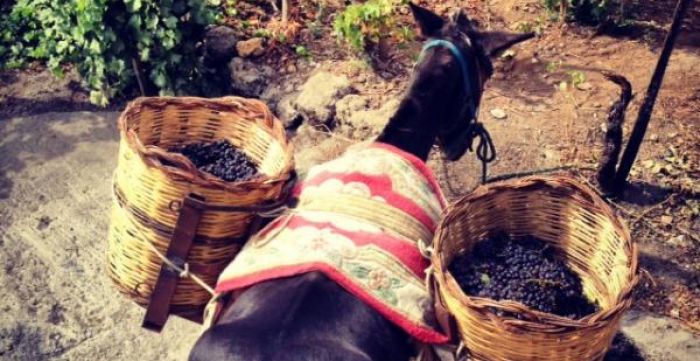
harvest report
08.05.2012
Pictures from Salvo Foti's 2012 Harvest
<p><img src="http://louisdressner.com/uploads/images/article/2019_Sep_23//db/fb/dbfb9e47494785fec03bf66f96c8b4fe.jpg" /></p>
<p><img src="http://louisdressner.com/uploads/images/article/2019_Sep_23//5d/fb/5dfb10bc69f454d357cbe5b7b640a528.jpg" /></p>
<p><img src="http://louisdressner.com/uploads/images/article/2019_Sep_23//ea/1b/ea1b4f4000761a299375752952500a8b.jpg" /></p>
<p><img src="http://louisdressner.com/uploads/images/article/2019_Sep_23//8f/0d/8f0d483cb08d26ff275041f6dcb62aa6.jpg" /></p>
<p><img src="http://louisdressner.com/uploads/images/article/2019_Sep_23//68/52/6852b4e9b1b89a3b9401993c6a80ccb1.jpg" /></p>
<p><img src="http://louisdressner.com/uploads/images/article/2019_Sep_23//df/c5/dfc5e6ca0a2bff1f8db76859e51e337b.jpg" /></p>
<p> </p>
Article
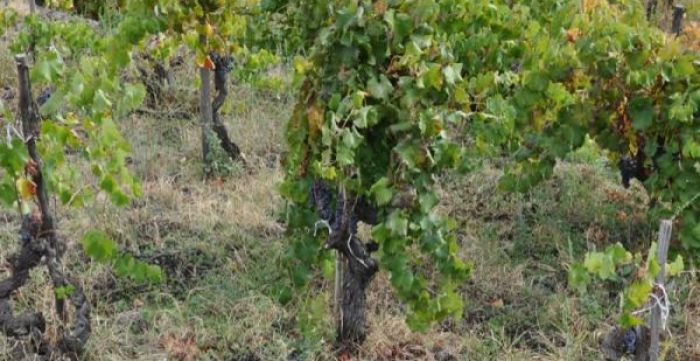
harvest report
12.10.2011
Pictures from Salvo Foti's 2011 Harvest
<p><img src="http://louisdressner.com/uploads/images/article/2019_Sep_25//c8/5e/c85e3d1a344dfb9487ebe221e2db319e.jpg" /></p>
<p><img src="http://louisdressner.com/uploads/images/article/2019_Sep_25//92/75/92758b778dd31e0ccc7751d9d9c2eb5b.jpg" /></p>
<p><img src="http://louisdressner.com/uploads/images/article/2019_Sep_25//1b/5e/1b5e731be559d02352bc50d20d6468c8.jpg" /></p>
<p><img src="http://louisdressner.com/uploads/images/article/2019_Sep_25//49/d4/49d46ea657accc92813fd94728538503.jpg" /></p>
<p><img src="http://louisdressner.com/uploads/images/article/2019_Sep_25//66/1d/661d1fcc59d3a74873924628ef6f3c9d.jpg" /></p>
<p><img src="http://louisdressner.com/uploads/images/article/2019_Sep_25//b6/f1/b6f1ddd55c6752768de508781c1edfe6.jpg" /></p>
<p><img src="http://louisdressner.com/uploads/images/article/2019_Sep_25//35/bf/35bf723f7a6e37c4d28c4a441b1da745.jpg" /></p>
<p><img src="http://louisdressner.com/uploads/images/article/2019_Sep_25//e8/82/e8820d86c97fc08881bbeaacabf0a252.jpg" /></p>
<p><img src="http://louisdressner.com/uploads/images/article/2019_Sep_25//e3/18/e318cf265eba54233d5369f46286d1fa.jpg" /></p>
<p><img src="http://louisdressner.com/uploads/images/article/2019_Sep_25//d5/67/d5676bad735593d73018fd54bf7d2b9f.jpg" /></p>
<p><img src="http://louisdressner.com/uploads/images/article/2019_Sep_25//97/86/978668e7cf50e72527b013e4886ebcaf.jpg" /></p>
<p><img src="http://louisdressner.com/uploads/images/article/2019_Sep_25//4f/d6/4fd6e9b6cdf1be65dc0ff82aec172108.jpg" /></p>
<p><img src="http://louisdressner.com/uploads/images/article/2019_Sep_25//be/90/be9020826fe4df12419fc57e4e9a1c1d.jpg" /></p>
<p><img src="http://louisdressner.com/uploads/images/article/2019_Sep_25//0d/4b/0d4bf5495a59915e79730077b8d03c4f.jpg" /></p>
<p><img src="http://louisdressner.com/uploads/images/article/2019_Sep_25//61/51/6151ed710344d391134b041061ca9b00.jpg" /></p>
<p><img src="http://louisdressner.com/uploads/images/article/2019_Sep_25//2e/84/2e843e6dbb1fbabd5cd8460ddc121ba5.jpg" /></p>
<p><img src="http://louisdressner.com/uploads/images/article/2019_Sep_25//68/ca/68ca57328e34fbf0ddf4e1bf5ed93bba.jpg" /></p>
<p><img src="http://louisdressner.com/uploads/images/article/2019_Sep_25//51/a0/51a0d4e68cbef6f5b525a1d2d7762c33.jpg" /></p>
<p><img src="http://louisdressner.com/uploads/images/article/2019_Sep_25//cf/d3/cfd3810333dbbf796d2d3ef37eb5c43f.jpg" /></p>
<p><img src="http://louisdressner.com/uploads/images/article/2019_Sep_25//58/43/58430943dc03aa5cb680f28f530b61ea.jpg" /></p>
<p><img src="http://louisdressner.com/uploads/images/article/2019_Sep_25//5d/d8/5dd83c1c3188d0c34868921299536688.jpg" /></p>
<p><img src="http://louisdressner.com/uploads/images/article/2019_Sep_25//51/12/51120ac460b8386d278aec34e2141c75.jpg" /></p>
<p><img src="http://louisdressner.com/uploads/images/article/2019_Sep_25//de/e3/dee3600a109142db975713f1ead80826.jpg" /></p>
<p><img src="http://louisdressner.com/uploads/images/article/2019_Sep_25//32/76/327652683245688b4f277e9ce461486c.jpg" /></p>
<p><img src="http://louisdressner.com/uploads/images/article/2019_Sep_25//e2/70/e270f70eeb1528dd8ae3d912d996cafd.jpg" /></p>
<p><img src="http://louisdressner.com/uploads/images/article/2019_Sep_25//99/4a/994a280f3cb3e4741b8887884fd428f9.jpg" /></p>
<p><img src="http://louisdressner.com/uploads/images/article/2019_Sep_25//fa/18/fa180c45dc0eece65cde07f3ce1d69a7.jpg" /></p>
<p><img src="http://louisdressner.com/uploads/images/article/2019_Sep_25//31/9c/319c5b8c9fde9c4e67c51618c4ffd900.jpg" /></p>
Article

harvest report
12.10.2010
2010 I Vigneri Harvest Report
<p><strong>Randazzo, October 12th 2010</strong></p>
<p><em>(N.T. Starting last year, I Vigneri has refurbished an old </em><glossary term="Palmento" title="758"><em>Palmento</em></glossary><em>, the ancient </em><glossary term="Manual Press" title="1200"><em>wine press</em></glossary><em> that uses levered perpetual motion to </em><glossary term="Pressing" title="827"><em>press</em></glossary><em> the fruit in a lava-stone trough. It's been illegal to use them for a number of years due to a ban by the European Union.)</em><br />
<br />
In the first few days of October, the same as in every year, there is something different in the air, in the doing, in speaking, in everyday tasks, a certain excitement, trepidation. It’s the prelude to the <glossary title="521">harvest</glossary> that puts everyone in a state of preoccupation mixed with joy. It is understood that the littlest thing can turn a year’s work worthless. A year that would be lost. The clouds which around here at this time are gray, full of water, pass above our noses menacing us with their usual smell. You look at them seemingly indifferent, but your eyes are watching for the warning sign to see the clouds envelope the top of the Mountain (<glossary title="429">Etna</glossary>). You hope for a wind to scatter them. Ultimately nothing happens... <em>Muntagna dici ca nu gniovi…na paura</em> ("<glossary term="Etna" title="429">Etna</glossary> says it will not rain, don't worry") my grandfather used to say.</p>
<p>In the evening, around the table in the warmth of the family, we listened to our grandfather. His stories, mildly frightening for children, fascinated us. My grandfather knew a lot of stories. On one of those evenings, gathered around the fire waiting for the <span class="zalup"><span><glossary term="Harvest" title="521">harvest</glossary><span>,</span></span></span> with an expression as if confiding a secret, or a great truth, he said, <em>Carusi, riurdativillo sempri u vinu si fa ca racina, sulu ca racina!</em> ("Always keep in mind it’s the grapes that make a wine, only the grapes"). This never ceased to baffle me because obviously I knew that wine was made from grapes.</p>
<p>I spent a lot of years <glossary term="Harvest" title="521">harvesting</glossary> and this thought often returned to mind and in the age of biotechnical capacity, it seemed, ever-present. In this age of super<span class="zalup"><span><span>-</span><glossary title="1128">yeasts</glossary> </span></span>and super<span class="zalup"><span><span>-</span><glossary title="423">enzymes</glossary> </span></span>that extract everything you find (and even some you don’t) in a grape and that promise to make a mediocre wine of supposed high quality, my grandfather’s voice speaks to me... <em>riurdativillo sempri u vinu si fa ca racina.</em><br />
<br />
The 2010 <glossary term="Harvest" title="521">harvest</glossary> is finished. </p>
<p>Again this year, through the efforts of man and the help of God, we were able to <glossary title="521">harvest</glossary> and make wine from our precious fruit.<br />
The Mountain (<glossary title="429">Etna</glossary>), with its strength, with its unique climate and terrain gave us a real wine: not a <glossary title="422">enologist’s</glossary> wine, not a winemaker’s wine, but a real wine expressing the <glossary title="1026">terroir</glossary> of <glossary title="429">Etna</glossary> and its <glossary title="1103">viticultural</glossary> heritage.<br />
<br />
We wanted, against those who impose absurd legislation, to continue producing our wine like it has been done for 2000 years on <glossary title="429">Etna</glossary> with our vines in<font color="#7b143e"><strong> <glossary term="Gobelet" title="497">alberello</glossary></strong></font> and our <span class="zalup"><span><glossary term="Palmento" title="758">Palmenti</glossary><span>,</span></span></span> using only our strength, our passion, our sacrifice and only those correct innovations that respect nature.<br />
<br />
The end result is always a unique wine with a strong personality, a child of <span class="zalup"><span><glossary title="429">Etna</glossary><span>,</span></span></span> of the traditional grape varieties of the region, of our men and women of <span class="zalup"><span><glossary title="429">Etna</glossary><span>.</span></span></span><br />
<br />
We want our wine, made in the volcanic stone, to pass on the force of the volcano, the <glossary title="662">minerality</glossary> of its soil and the passion and humanity of its people. We want our wine to be an <glossary title="429">ETNA</glossary> WINE, not just a wine made on <span class="zalup"><span><glossary title="429">Etna</glossary><span>.</span></span></span></p>
Article
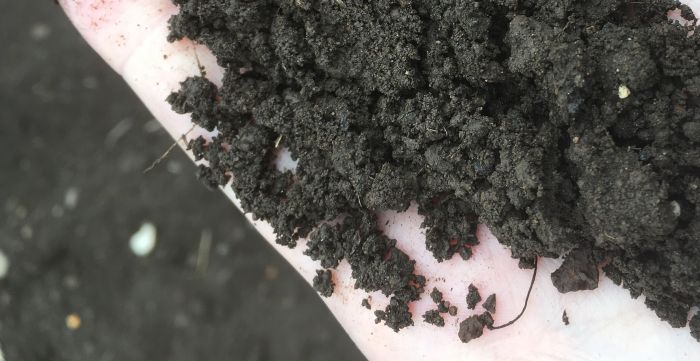
harvest report
17.10.2007
2007 Salvo Foti Harvest Report
<p><strong>Randazzo October 17th, 2007</strong><br />
<br />
The climatic progression in eastern <glossary title="951">Sicily</glossary> for 2007 was an anomaly, characterized by moderate rainfall levels in the fall-winter period that were prolonged through the normal season. Morever, in June, highly unusual in <span class="zalup"><span><glossary title="951">Sicily</glossary><span>,</span></span></span> there was abundant rainfall that allowed a particularly virulent outbreak of powdery <glossary title="1137">mildew</glossary> that in certain cases caused very significant damage to <glossary title="1129">yields</glossary> (from 15 to 40% less than in 2006). The rest of the summer was <span class="zalup"><span><glossary title="1167">drought</glossary><span>,</span></span></span> without rain at all. This made the vines shut down and sped up the <span class="zalup"><span><glossary title="639">maturation</glossary><span>.</span></span></span><br />
<br />
In my climatic zone, Lipari (Eolian Islands)-Pachino, the <glossary title="521">harvest</glossary> was early by 15-20 days respective to last year. On account of the <glossary title="1167">drought</glossary> the <glossary title="521">harvest</glossary> was drawn out through almost all of September. Relative to the quality, where there were limited or no <glossary title="1137">mildew</glossary> attacks, we had exceptional production, better than 2006 and on a par with 2001, which I consider the best <glossary title="1109">vintage</glossary> in the last seven years for eastern <span class="zalup"><span> <glossary title="951">Sicily</glossary><span>.</span></span></span><br />
<br />
<strong>Pachino e Monte Iblei:</strong> </p>
<p>In this part of southeastern <glossary title="951">Sicily</glossary> the <glossary title="1167">drought</glossary> conditions made for an earlier <glossary title="521">harvest</glossary> of around 15 days. In the case of the <glossary title="1139">indigenous</glossary> grapes (<glossary title="714">Nero d’Avola</glossary> e <glossary title="467">Frappato</glossary>), there was a reduction in <glossary title="1129">yields</glossary> of about 20% compared to the year before. The <glossary title="239">Caricante</glossary> (Gulfi) was harvested at the end of August, the <glossary title="714">Nero d’Avola</glossary> and <glossary title="467">Frappato</glossary> in the Iblei mountains between the 15th and 20th of September and the <glossary title="714">Nero d’Avola</glossary> of Pachino between the end of August and 14th of September.<br />
<br />
<strong>The <glossary title="429">Etna</glossary> Zone:</strong> </p>
<p>On the south, east and north sides, the rains lasted into June. Then a long <glossary title="1167">drought</glossary> defined the summer and pretty much all of September. The vines suffered from this situation and accelerated the <glossary title="639">maturation</glossary> suddenly (especially in the soils of volcanic <glossary title="909">sand</glossary>), that at first seemed to be ahead by one month. Some intermittent rains and a summer heat at the end of September/beginning of October allowed the plants to recover some from the heavy stress of the <glossary title="1167">drought</glossary> and finished off the <glossary title="639">maturations</glossary> 10-15 days ahead. In all parts of <glossary title="429">Etna</glossary> there was a reduction of 15% production relative to last year. The quality of the grapes, for their <glossary title="324">concentration</glossary> and balance of their different components, can be considered exceptional.<br />
<br />
The <glossary title="661">Minella</glossary> was <glossary term="Harvest" title="521">harvested</glossary> from different vineyards, in the first days of September. The <glossary title="271">Chardonnay</glossary> was harvested at the end of August, and the <glossary title="217">Cabernet Sauvignon</glossary> at the middle of September with really good sugar/acid balance. The <glossary title="521">harvest</glossary> of <glossary title="713">Nerello Cappuccio</glossary>and <glossary title="713">Nerello Mascalese</glossary> was between the end of September and the first days of October and the <glossary title="239">Caricante</glossary> between the 10 and 17th of October.<br />
<br />
In Monte Serra, the <glossary title="521">harvest</glossary> was finished in the second week of September. The grapes of <glossary title="713">Nerello Mascalese</glossary> and <glossary title="713">Nerello Cappuccio</glossary> gave excellent results.</p>
Article
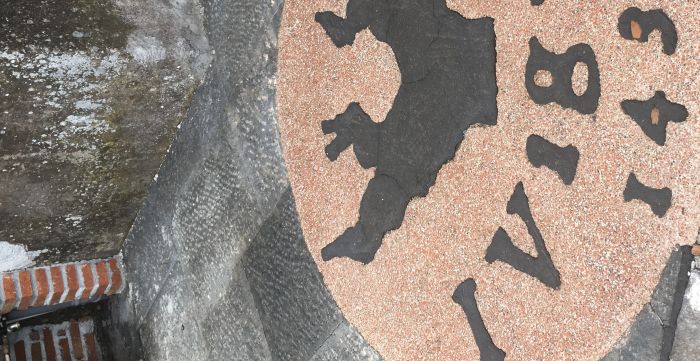
harvest report
15.10.2006
2006 I Vigneri Harvest Report
<p><strong>Salvo Foti, October 15th 2006</strong></p>
<p>It is my opinion that before giving a justified assessment of the wines of this <glossary title="1109">vintage</glossary> we need to wait until all the grapes have entered the <glossary title="254">cellar</glossary> and the <glossary title="441">fermentations</glossary> are complete. Otherwise, one risks hawking an “exceptional bearskin” before the bear has been trapped!<br />
<br />
We can give some generalized opinions of the grapes and the growing areas, understanding that each vine has its particular identity and different history even within the same year of production.<br />
<br />
The climatic pattern for 2006 in Eastern <glossary title="951">Sicily</glossary> is distinguished by a summer that was somewhat cool, with average rainfall until the end of spring. The rains arrived at the end of summer, if only of less than average quantity, lasting into the month of September. Between the end of September and the beginning of October conditions switched from brief rainstorms to days of full sun, practically like in summer.<br />
<br />
In the first ten days of August there had been some days of intense heat and wind which, in some cases, caused damage. On <span class="zalup"><span><glossary title="429">Etna</glossary><span>,</span></span></span> in some areas, this unusual climatic event compromised the grapes (in some cases up to 30% of the grapes.) The grapes, in all areas, however, finished their <glossary title="639">maturation</glossary> with sufficient levels of sugar and <span class="zalup"><span><glossary title="71">acidity</glossary><span>.</span></span></span><br />
<br />
<strong>Pachino e Monti Iblei</strong>:</p>
<p>In this region of southeast <span class="zalup"><span><glossary title="951">Sicily</glossary><span>,</span></span></span> the climatic conditions allowed for a late<strong> <glossary title="521">harvest</glossary></strong>. But the hot wind of those few days in August accelerated the <glossary title="639">maturation</glossary> of the non-native grapes (<glossary title="271">Chardonnay</glossary>), which were <glossary title="521">harvested</glossary> soon after the 15th of August. In the case of the native grapes (<glossary title="714">Nero d’Avola</glossary> e <glossary title="467">Frappato</glossary>), we did not anticipate an early <span class="zalup"><span><glossary title="521">harvest</glossary><span>,</span></span></span> but there was reduction in <glossary title="1129">yields</glossary> of around 15% less than last year. The <glossary title="239">Carricante</glossary> was harvested the first ten days of September, the <glossary title="714">Nero d’Avola</glossary> of Pachino between the 10th and 26th of September and the <glossary title="714">Nero d’Avola</glossary> and <glossary title="467">Frappato</glossary> in Monti Iblei at the end of September until the 1st of October.<br />
<br />
<strong>The Regions of <glossary title="429">Etna</glossary></strong>:</p>
<p>On the eastern and northern slopes, throughout the growing season, there was insufficient rain until the first ten days of October. This accelerated the <span class="zalup"><span><glossary title="639">maturation</glossary><span>,</span></span></span> if only a little, for both the native and non-native grapes. The <glossary title="661">Minella</glossary> was harvested from different vineyard spots at the middle of September. The <glossary title="271">Chardonnay</glossary> was harvested at the end of August and the <glossary title="217">Cabernet</glossary> at the start of October at optimal sugar/acid balance. The <glossary title="521">harvest</glossary> of the <span class="zalup"><span><glossary title="713">Nerello Cappuccio</glossary><span>,</span></span></span> <glossary title="713">Nerello Mascalese</glossary> and the <glossary title="239">Carricante</glossary> is scheduled for the 16th to the 26th of October. In almost all the areas of <span class="zalup"><span> <glossary title="429">Etna</glossary><span>,</span></span></span> there is a reduction in <glossary title="521">harvest</glossary> of 20% under last year.<br />
<br />
Always a separate case, the southeastern <glossary title="429">Etna</glossary> slopes (Monte Serra), where the very favorable climatic conditions and the particular disposition of the land permitted the <glossary title="639">maturation</glossary> to go until the end of September, the <glossary title="521">harvest</glossary> was done on the 28th and 29th of September. The <glossary title="713">Nerello Mascalese</glossary> and the <glossary title="713">Nerello Cappuccio</glossary> are analytically excellent.</p>
Article


























